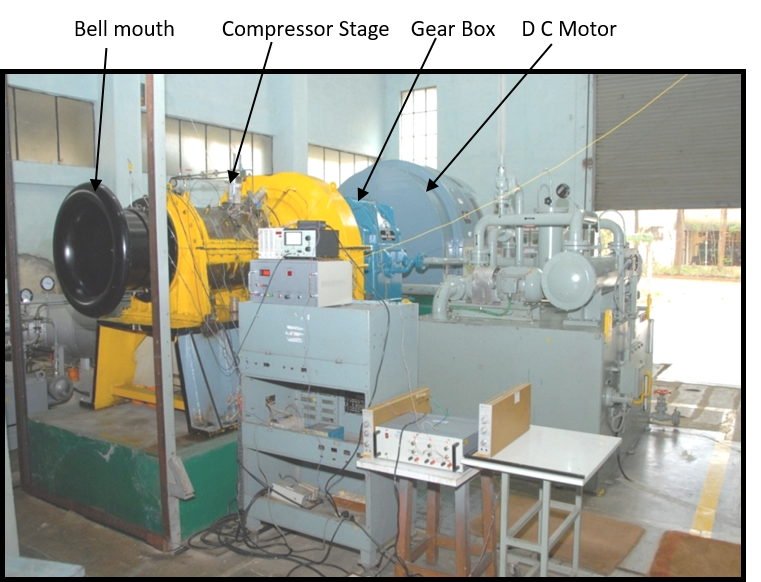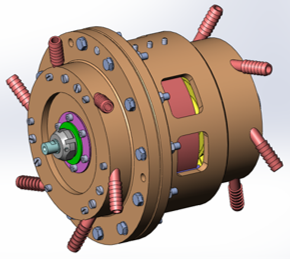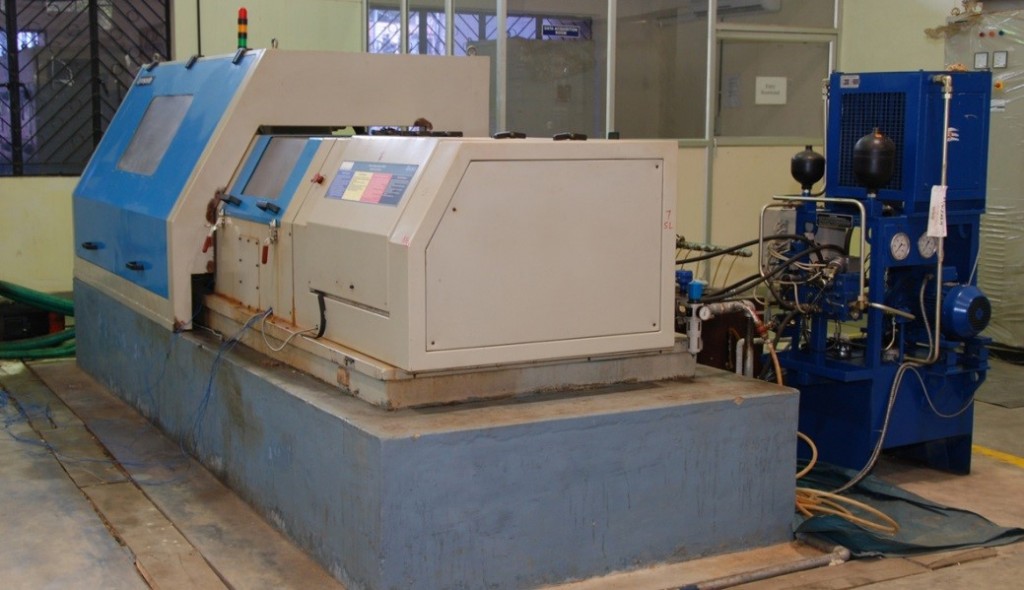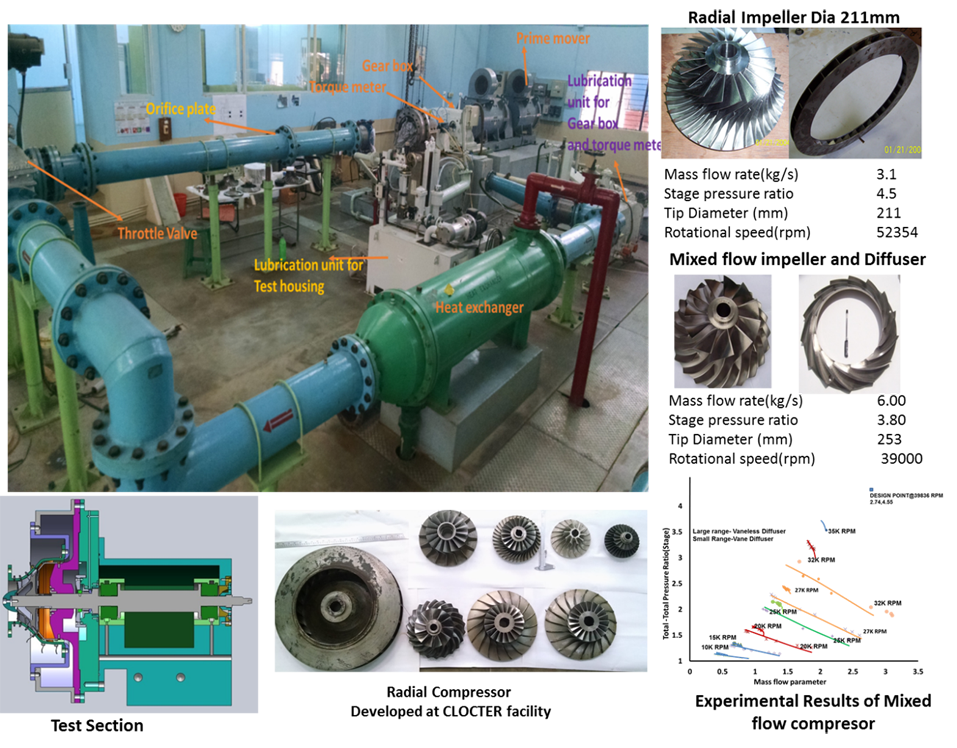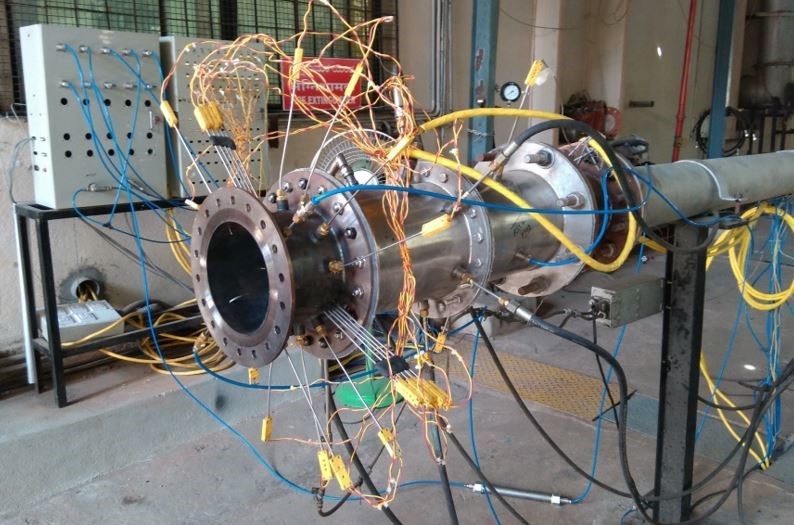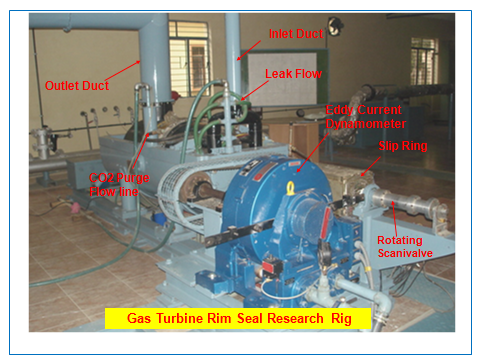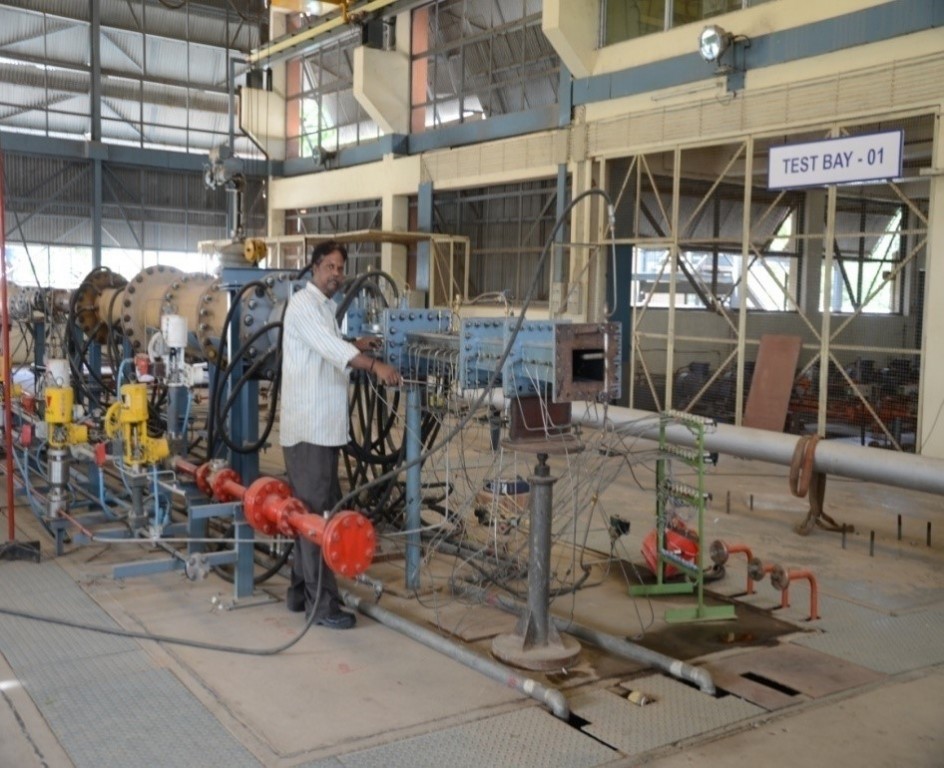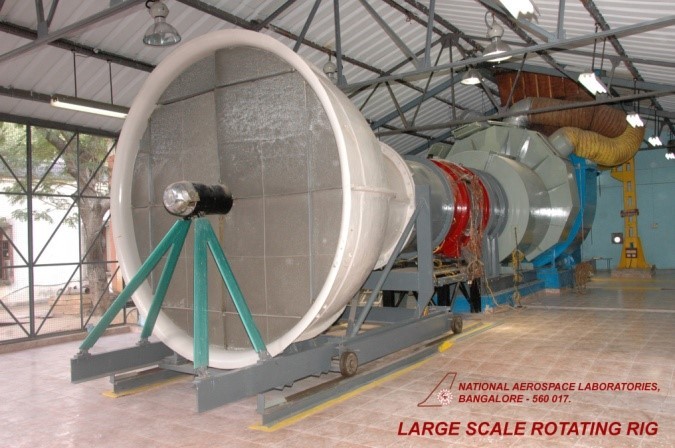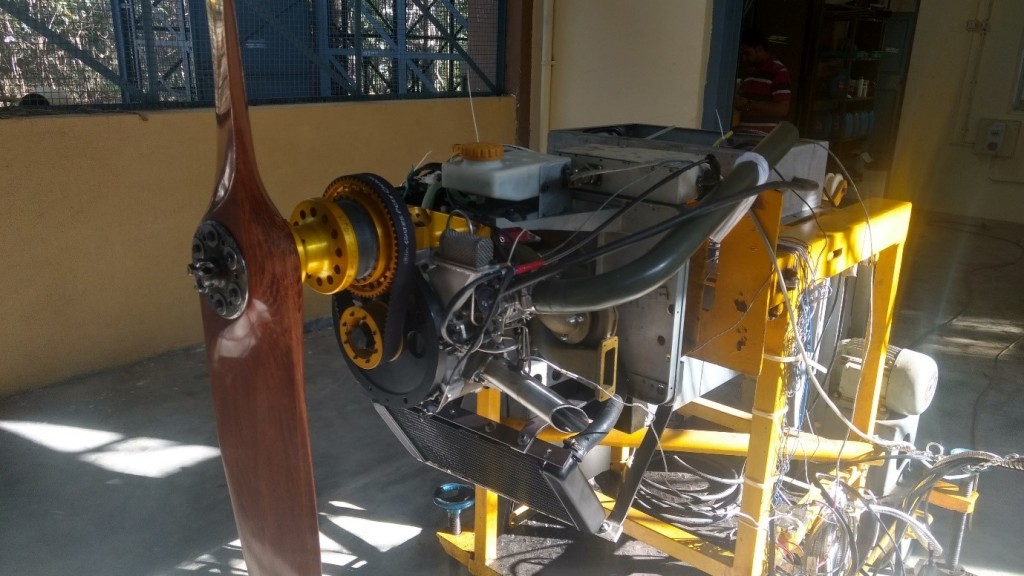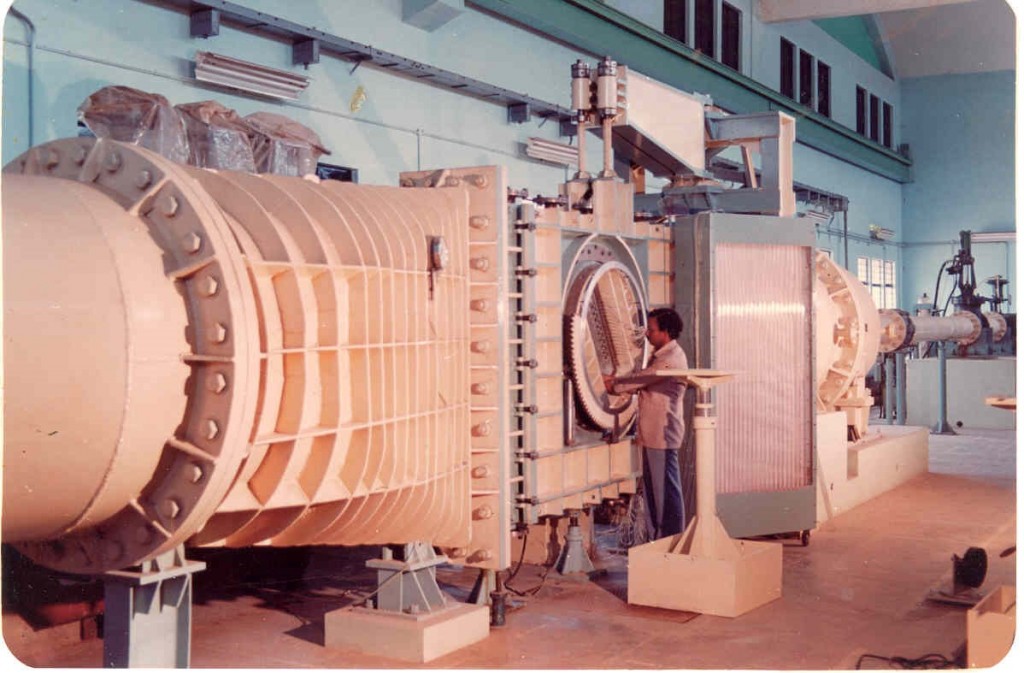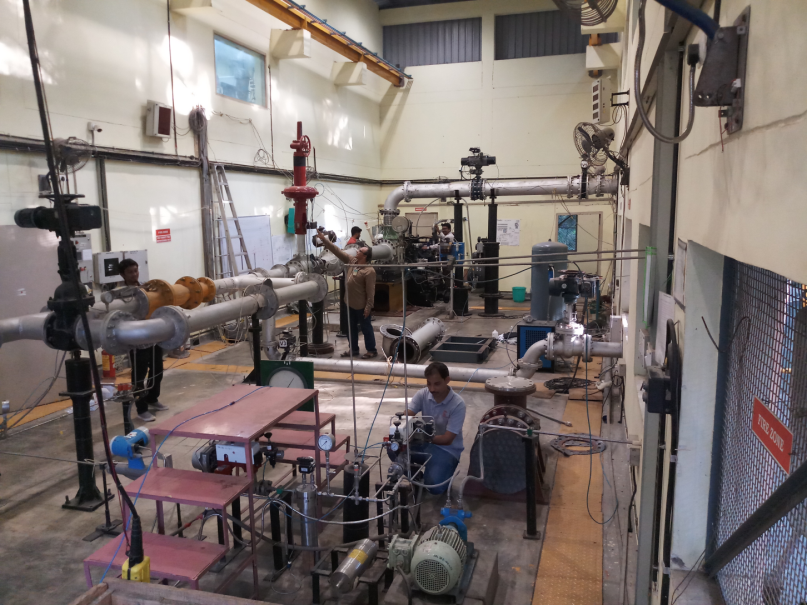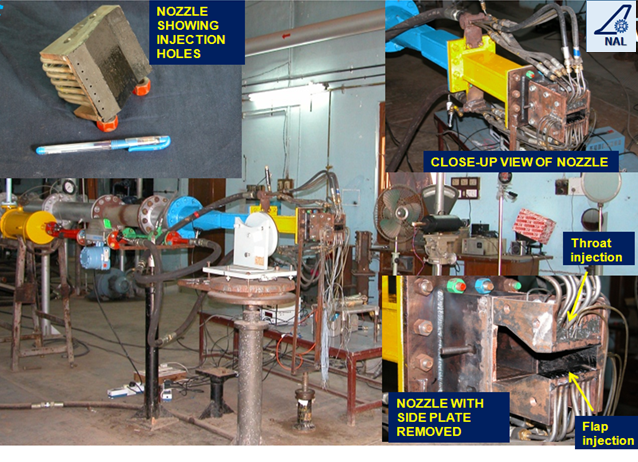
Fluidic Thrust Vectoring & Combustion Instability Research Facility
F-1 Fluidic Thrust Vectoring Test Facility
Thrust vectoring is an important feature in combat air vehicle design. There are various methods of achieving thrust vectoring. One of the conventional methods is by using complex mechanical actuation systems. These are usually very expensive, heavy, sluggish and difficult to integrate and maintain. They are also aerodynamically inefficient and as stealth requirements become even more important, the need for a reduction in the radar- cross section (RCS) and infra-red radiation (IRR) signatures of military aircraft becomes a huge challenge. Another method of achieving thrust vectoring is by using fluidics. “Fluidics” is the technology of employing general fluid phenomena of wall attachment and stream interaction in specially designed devices to perform the functions of sensing, logic and control. Fluidic thrust vector control involves the use of no moving parts. It increases structural rigidity and decreases weight. It has great flexibility, rapid response and is inexpensive. With careful design, it could lead to a reduction in the overall radar cross section of the aircraft. Research in this area has been carried out to demonstrate the fludic thrust vectoring technique in a rectangular nozzle.

Fluidic Thrust Vectoring Test rig
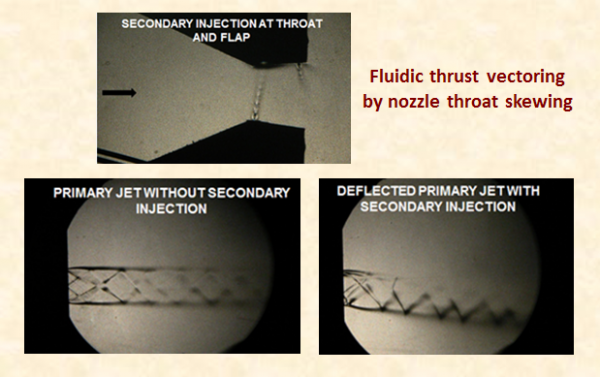
Schlieren images showing vectored jet and location of secondary jets being injected
Fluidic thrust vectoring concepts
Development of Valveless Pulsejet Engine

 English
English हिन्दी
हिन्दी